Mastering Roof Inspections: Asphalt Composition Shingles, Part 42
by Kenton Shepard and Nick Gromicko, CMI®
The purpose of the series “Mastering Roof Inspections” is to teach home inspectors, as well as insurance and roofing professionals, how to recognize proper and improper conditions while inspecting steep-slope, residential roofs. This series covers roof framing, roofing materials, the attic, and the conditions that affect the roofing materials and components, including wind and hail.
Weathering is the biggest source of environmental damage to shingles, but other sources related to the environment can damage shingles, as well.
Tree Damage

Tree damage may be the result of abrasion from wind-blown tree branches scraping against shingles or from the impact of falling branches.
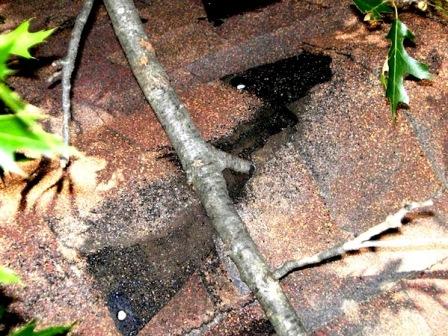
Overhanging branches should always be cut back to avoid damage from both abrasion and impact, and from the accumulation of leaf debris on the roof and in the gutters.

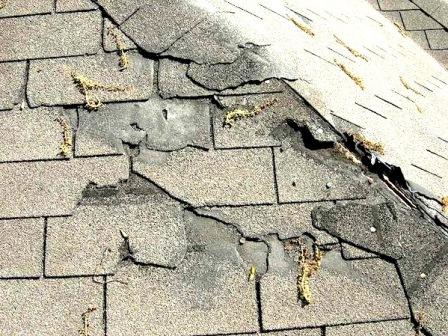
Animal Damage
Squirrels and raccoons will sometimes tear through shingles and roof sheathing when they’re searching for a protected area in which to raise their young. They often attack roof eaves first, especially on homes that have suffered decay to the roof sheathing due to a lack of drip edges or from ice dam problems. Decayed sheathing is softer and easier to tear through.

The photo above shows raccoon damage.

The photo above shows damage made by squirrels that chewed through these shingles.

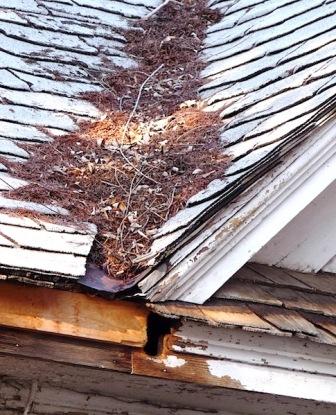
The two photos above show entry holes made by squirrels at the base of the valleys, where decay from valley leakage has softened the wood trim, making it easier to gnaw through.
Biological Growth
Algae, moss and lichen are types of biological growth that may be found on asphalt shingles under certain conditions. There is disagreement across the different segments of the roofing industry about whether such growth is actually destructive or just a cosmetic problem.
Asphalt shingles may be discolored by both algae and moss, which spread by releasing airborne spores.
Almost all biological growth on shingles is related to the long-term presence of excessive moisture. That’s why these problems are more common in areas with significant rainfall or high relative humidity, although, even in dry climates, roofs which are shaded most of the time can develop growth.
The presence of growth is a sign to be careful when you’re walking the roof. Stay off areas of discoloration until you’re sure they’re safe to walk.
Algae

What we commonly call “algae” is actually not algae, but a type of bacteria capable of photosynthesis. We’ll continue to call it algae because we’re sticking to common terms.
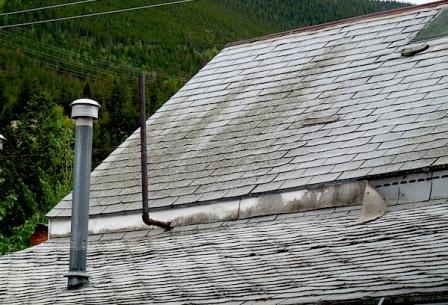
Algae appears as dark streaks, which are actually the dark sheaths produced by the organisms to protect themselves from UV radiation. When environmental conditions are right, the problem can spread quickly across a roof.
Algae can feed on mineral nutrients, such as the calcium carbonate in limestone used as asphalt shingle filler. Calcium carbonate also causes asphalt to retain moisture, which also promotes algae growth, so shingles with excessive filler may be more likely to suffer more algae growth. The rate of filler consumption is slow enough that it’s not generally considered a serious problem.
Algae attaches itself to the shingle by secreting a substance that bonds it tightly to the surface. Growth can be difficult to remove without damaging the roof. The best method is prevention. Algae stains can sometimes be lightened in color by using special cleaners.
Power-washing and heavy scrubbing may loosen or dislodge granules. Chemicals used for cleaning shingles may damage landscaping. Also, the cleaning process makes the roof wet and slippery, so such work should be performed by a qualified professional.
Preventing Algae Growth
To inhibit algae growth, shingles are available that have special granule coatings. Copper-oxide is the most effective, but it can cause galvanic corrosion of metal gutters if the gutters are exposed to prolonged contact with standing water. If you work in an area where algae growth on asphalt shingles is known to be a problem, you should watch for corrosion.
Ceramic granule coatings may include zinc-oxide, which is the least effective of the two coatings.
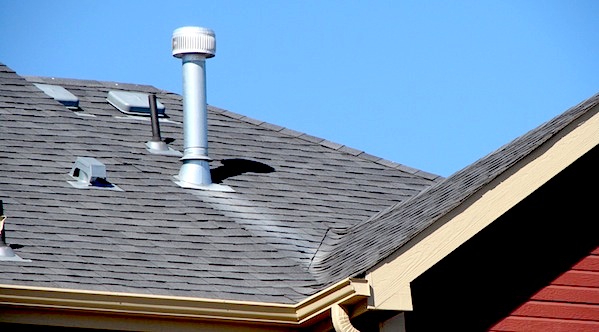
Zinc-oxide sometimes produces a white oxide buildup that will eventually weather away.

**************************************************
Learn how to master a roof inspection from beginning to end by reading the entire InterNACHI series: Mastering Roof Inspections.
Take InterNACHI’s free, online Roofing Inspection Course
Mastering Roof Inspections
Roofing Underlayment Types
Inspecting Underlayment on Roofs
Fall-Arrest Systems
Roofing (consumer-targeted)
More inspection articles like this

